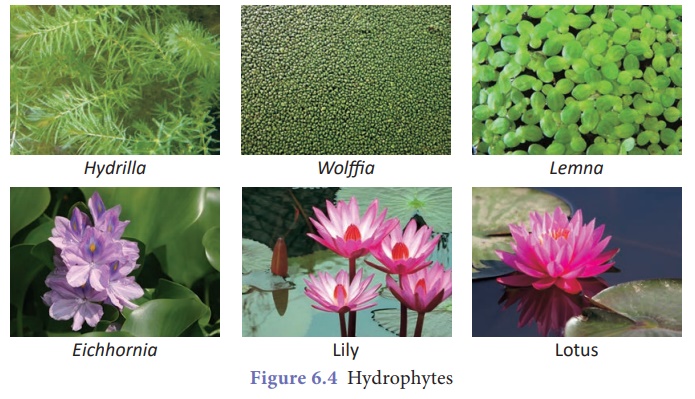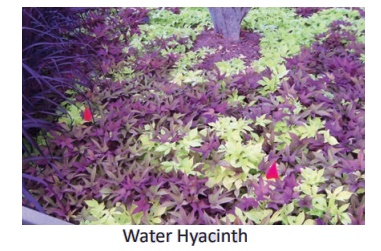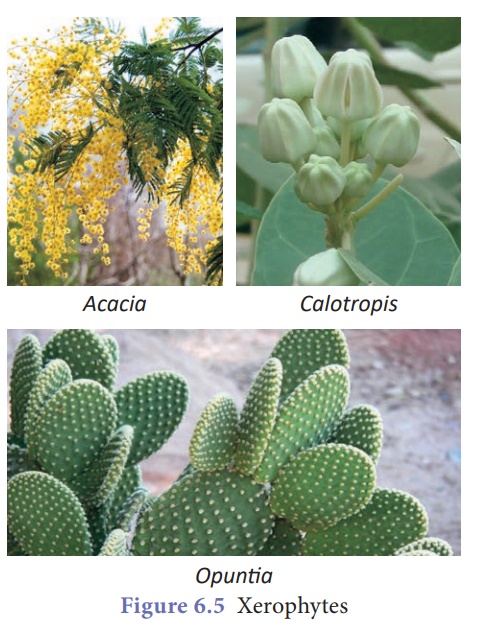Hydrophytes, Xerophytes, Mesophytes - Adaptations of plants | 9th Science : Environmental Science
Chapter: 9th Science : Environmental Science
Adaptations of plants
Adaptations
of plants
Any feature of an
organism or its part that enables it to exist under conditions of its habitat
is called adaptation. On the basis of water availability, plants have been
classified as:
(i) Hydrophytes
(ii) Xerophytes
(iii) Mesophytes
1. Hydrophytes
Plants growing in or
near water are called hydrophytes. Hydrophytes may be free floating or
submerged plants living in lakes, ponds, shallow water, marshy lands and marine
habitat. Hydrophytes face certain challenges in their habitat. They are:
(i) Availability of more water than needed.
(ii) Water current may damage the plant body.
(iii) Water levels may change regularly.
(iv) Maintain buoyancy in water.
Adaptations of hydrophytes
·
Roots are poorly developed as in Hydrilla or absent as in Wolffia
.
·
Plant body is greatly reduced as in Lemna.
·
Submerged leaves are narrow or finely divided. e.g. Hydrilla.
·
Floating leaves have long leaf stalks to enable the leaves move up
and down in response to changes in water level. e.g. Lotus.
·
Air chambers provide buoyancy and mechanical support to plants as
in Eichhornia (swollen and spongy petiole).


2. Xerophytes
Plants that grow in dry
habitat are called xerophytes. These plants develop special structural and
physiological characteristics to meet the following conditions:
(i) To absorb as much water as they can get from the surroundings.
(ii) To retain water in their organs for very long time.
(iii) To reduce the transpiration rate.
(iv) To reduce
consumption of water.

Adaptations of xerophytes
·
They have well developed roots. Roots grow very deep and reach the
layers where water is available as in Calotropis.
·
They store water in succulent water storing parenchymatous
tissues. e.g. Opuntia, Aloe vera.
·
They have small sized leaves with waxy coating. e.g. Acacia.
In some plants, leaves are modified into spines. e.g. Opuntia.
·
Some of the xerophytes complete their life cycle within a very
short period when sufficient moisture is available
3. Mesophytes
Mesophytes are common
land plants which grow in situations that are neither too wet nor too dry. They
do not need any extreme adaptations.
Adaptations of mesophytes
·
The roots of mesophytes are well developed and are provided with
root caps.
·
The stem is generally straight and branched.
·
The leaves are generally broad and thin.
·
The presence of waxy cuticle in leaves traps the moisture and
lessens water loss.
·
Leaves have stomata which close in extreme heat and wind to
prevent transpiration.
Related Topics